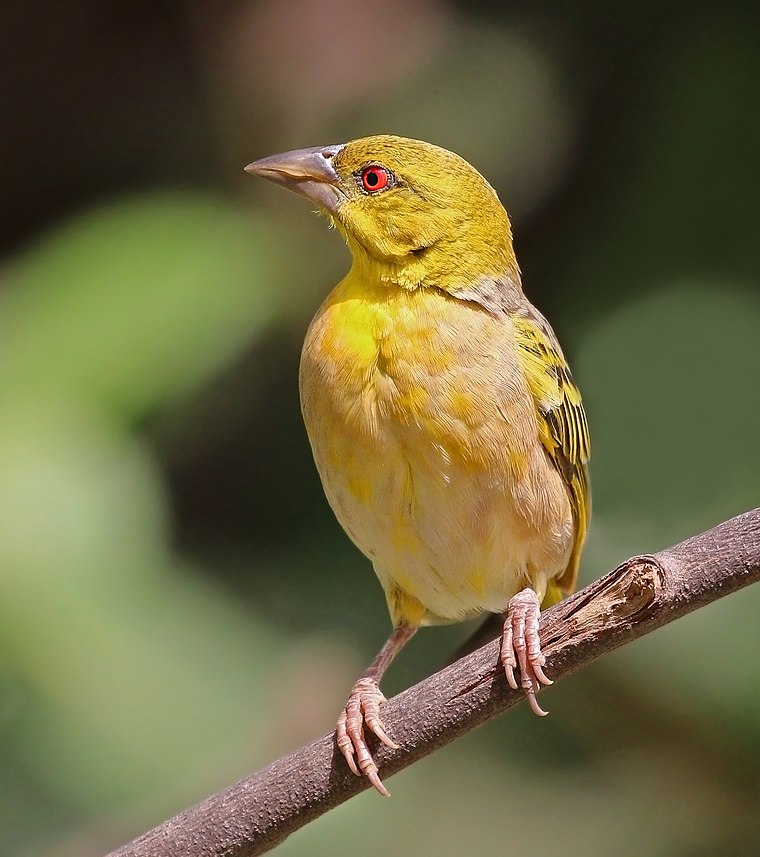Yesterday I posted my Frutta di Mare recipe and strongly recommended that it be served over al dentissimo spaghetti or linguini Aglio e Olio.
Here’s the recipe for that basic sauce.
Even the name is delicious.
This picture shows a female P. c. cucullatus individual in the Tanji Bird Reserve, The Gambia.
Photograph credit: Charles J. Sharp
This, the Lead Picture Today, Monday, July 29, 2019, on the blog –
existentialautotrip.com
The blog? A daily three to four minute excursion into photos and short texts to regale the curious with an ever-changing and diverting view of a world rich in gastronomy, visual art, ideas, chuckles, stories, people, diversions, science, homespun, and enlightenment.
Observing with wit and wisdom, Dom Capossela, an experienced leader, guides his team of contributors and followers through that world, an amusing and edifying conversation to join.
See ‘Thumbnail’ below for further description of the Lead Picture theme.
____________________________________________________________________________
So tasty.
Commentary
Monday, July 29, 2019
Yesterday I posted my Frutta di Mare recipe and strongly recommended that it be served over al dentissimo spaghetti or linguini Aglio e Olio.
Here’s the recipe for that basic sauce.
Measurements are per person
4oz long-strand pasta, removed from water while it is still very chewy.
While it still must be bitten to eat.
The pasta, with a bit of the starchy water still clinging to it, is dumped into the saute pan in which the Aglio e Olio is waiting.
Heat and toss the pasta and sauce for 15-20 seconds over high heat.
Serve garnishing each plate with generous amounts of Parmigiana cheese and freshly-ground pepper.
Aglio e Olio
4TB extra virgin olive oil
4 minced garlic cloves (more to taste)
Slightly brown the garlic
(I also thinly slice a single scallion and brown it with the garlic. Not traditional.)
Add 2TB water to stop further browning
Add 2TB each of fresh chopped parsley and basil.
(If fresh not available, use none. Dried herbs are undesirable in this dish.)
Add spices:
½ t crushed red pepper
½ t salt
½ t freshly-ground pepper
Simmer for two minutes.
__________________________________________________________
Weather
Monday, July 29, 2019
Today in Boston will be 90* and a feels-like of 93* with the chance of a thunderstorm.
We’ll have two more days of hot temperatures before our days mild down.
_____________________________________________
Tracking Postings – Tracking Time
Monday, July 29, 2019
Our 479th consecutive posting, committed to 5,000.
After 479 posts we’re at the 9.58 percentile of our commitment, that commitment a different way of marking the passage of time.
Posting always done by 6.00am the day of, but usually by 6pm of the night before.
Calvin Coolidge
____________________________________________
Acknowledgements
Monday, July 29, 2019
To Dr. Mike for today’s chuckle.
Sally for her cute add.
Always thanks to Wikipedia, the Lead and the Thumbnail sections of the Blog very often shaped from stories taken from that amazing website. They are truly worthy of public support.
And thanks to Howard D whose terrific logo now graces all of our entries.
A tip o' the hat (U.S. President Calvin Coolidge, 1924
___________________________________________
Saturday’s Dinner posted on
Monday, July 29, 2019
I made a three-pound porterhouse steak today as a dry run for a group of 15 assembling at my apartment next Sunday night.
Just to verify our slow-roast idiom vis a vis a bone-in piece of meat.
Worked fine.
Have ordered four such pieces for the group but will raise it to six pieces: the bones weigh a lot.
Naturally I feel the loss.
__________________________________________
Chuckle of the Day:
Monday, July 29, 2019
Four women at their weekly golf game.
A funeral procession passing slowly on the adjacent road.
One of the women turns from the game to pay her respects to the passing hearse.
She makes the sign of the cross and bows her head for five seconds then turns back, “Okay. Let’s continue.”
“Irene, that was very nice of you.”
“I know. But after all, tomorrow we would’ve celebrated our thirty-second wedding anniversary.”
__________________________________________
We love getting mail.
Contact me at domcapossela@hotmail.com
Monday, July 29, 2019
This reminder from Sally C:
Today, July 27, is the birthday of Hilaire Belloc, born in Paris, France, in 1870.
In his lifetime, he was known for his journalism and serious essays, but today he's best known for his books of humorous verse:
"When I am dead, I hope it may be said:
His sins were scarlet, but his books were read."
(Thanks to today's The Writer's Almanac from American Public Radio.)
Sally
Web Meister responds: Love these tidbits. I’ll match it with a piece from Ogden Nash, “Here’s a verse about rabbits That doesn’t mention their habits.”
______________________________________________________________
Today’s Thumbnail
Monday, July 29, 2019
The village weaver (Ploceus cucullatus) also known as the spotted-backed weaver or black-headed weaver, is a species of bird found in much of sub-Saharan Africa.
It has also been introduced to Hispaniola, Mauritius and Réunion.
This often abundant species occurs in a wide range of open or semi-open habitats, including woodlands and human habitation, frequently forming large noisy colonies in towns, villages and hotel grounds.
The species builds a large coarsely woven nest made of grass and leaf strips with a downward facing entrance, suspended from a branch in a tree.
Two to three eggs are laid.
Village weavers are colonial breeders, so many nests may hang from one tree.
They feed principally on seeds and grain, and can be a crop pest, but it will readily take insects, especially when feeding young, which partially redresses the damage to agriculture.
The calls of this bird include harsh buzzes and chattering.
Good Morning on this Monday, the twenty-ninth day of July, 2019
Our lead picture features a photo of a lovely bird.
And our Thumbnail adds a bit more info on it.
Our commentary fulfilled yesterday’s promise to publish a recipe for Aglio e Olio
We posted a Boston weather report and the ‘ticking calendar’ as illustrated by the growing number of posts as calendar markers.
We posted a chuckle and shared a dinner as well as a letter from Sally C, she an important part of our blogging family.
And now? Gotta go.
Che vuoi? Le pocketbook?
See you soon.
Your love.








